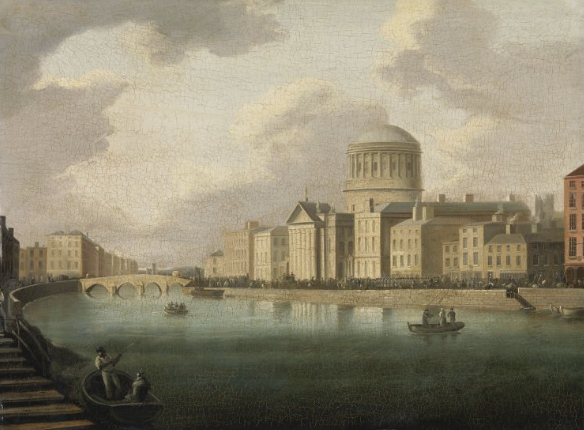
Every bit of the Four Courts has a story and the sculptures over the entrances into the grassed courtyards on either side of the portico are no exception.
Originally depicted with some artistic licence in early illustrations of the Four Courts, the 19th century camera (which never lies) show these sculptures as in fact depicting a lion and a unicorn surrounding a harp surmounted by a crown – the British crown, in fact, with the lion being England, the unicorn Scotland, and the harp added in to keep the locals happy.


Although they survived the 1922 Battle of Dublin in better nick than the rest of the Four Courts complex, the form of the sculptures changed slightly, but significantly, in the course of reconstruction work over the following decade.

According to the Roscommon Herald, 12 August 1931:
“One of the great items of interest of the week was the completion of a stone-cutting job over the front entrance of the Dublin Four Courts. The Royal Arms has been clipped and punched and hammered into a new shape: the lion and the unicorn have had their heads re-carved into a shape that resembles more than anything else the outer leaves of a bit Flat Dutch cabbage on a frosty morning: the medallion which formerly supported the crown over which those graven beasts were supposed to have been fighting is now bereft of that adornment, the harp remains on the face of the carving but the crown is gone. The harp, however, is not on top. The place of the crown has been filled by a little knobule.”
An interesting solution to the vexed political problem of the Irish Free State’s exact relationship with Great Britain! As the image at the start of this post shows, despite our Constitution of 1937, and subsequent legislation declaring Ireland a Republic, these amorphous animals and question-posing knobules persist in exactly the same form today.
Time to update? And if so how?

Above image via Google Maps. Image at start of post via Digital Repository of Ireland
(Creative Commons Licence)


